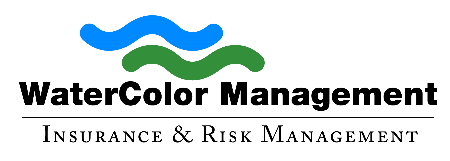
A paper mill uses water in almost every step of the paper-making process. Because pollutants contaminate much of this water, paper companies often choose to carry groundwater insurance coverage. However, claims can be minimized by an effective wastewater treatment process to keep the flow re-entering the water cycle free of contaminants. Here are five of the paper industry’s best practices for treating and managing wastewater.
1. Water Conservation
The paper production process requires 17,000 gallons of water for every ton of paper made. Here are a few ways mills can use less water:
- Use a dry instead of a wet debarking process.
- Contain and collect spills of the liquid products created during crafting
- Whiten paper with chemicals other than bleach
- Use soft water for the boiler feed
2. Primary Treatment
The first step in treating wastewater is to physically remove solids so that only dissolved particles remain in the water. There are two types of best management practices that exist to accomplish this goal: filtration and sedimentation. Filtration involves running water through a filter or screen that does not allow grit and other particles to pass through, while sedimentation is the practice of allowing gravity to pull denser materials to the bottom of a settling pool. Whichever process a factory uses, the effluent then goes to a dissolved air flotation unit to complete the job.
3. Secondary Treatment
The second step is to remove organic compounds from the filtered water with the activated sludge process. After water enters an aeration tank, sanitation engineers continuously add air so that microorganisms remain suspended in an oxygen-rich environment in the middle of the water. They then send the mixture to a clarifier, which is a settling tank that mechanically removes the solids.
4. Tertiary Treatment
Tertiary treatment is the final stage, and consists of the following steps:
- Sand filtration – Wastewater passes through a filter composed of sand and a finer material such as anthracite. If this technique is not sufficient to remove compounds, technicians oxidize them with advanced techniques.
- Activated carbon treatment – As a final treatment, granular activated carbon filters remove odors and any remaining organic materials.
- Reverse osmosis – A membrane forces water against its concentration gradient to remove additional contaminants such as heavy metals.
5. Recycling
A final best management practice that only a handful of paper mills currently use is that of recycling. By using microfiltration and reverse osmosis, they can use water repeatedly before eventually treating and discharging it. This uncommon practice does not just save water and energy, but it also reduces the environmental impacts that result in groundwater insurance coverage claims. One disadvantage of recycling is the potential for corrosion and the buildup of silica within the system.
About Watercolor Management
Watercolor Management has insured the water industry for over 30 years. Our policies include unlimited defense cost coverage in the event of a lawsuit against you. Call us at (855) 929-0824 or email info@watercolormanagement.com for a quick quote for your Water Business Professional, Products/Completed operations, Pollution and General Liability Insurance.




